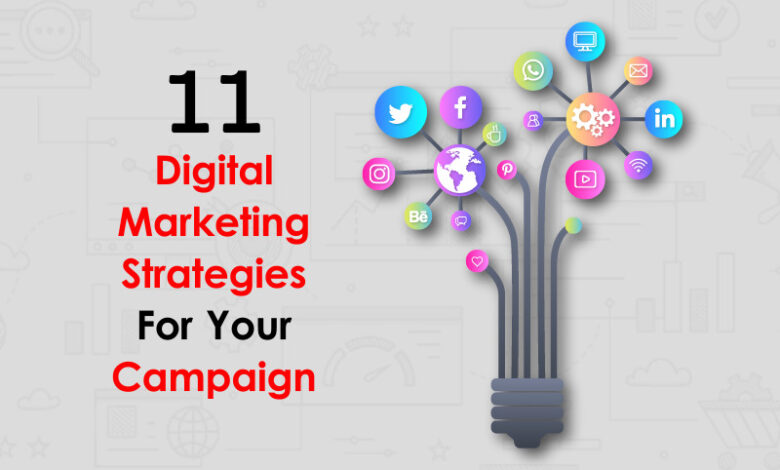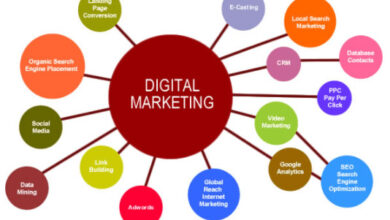11 Top Strategies to Give Your Digital Marketing Business Success

Digital marketing is an important part of any business, and the effectiveness of your digital campaigns can have a huge impact on your revenue and profits. If you’re planning on using digital marketing in 2023, this guide provides some expert advice for how you could improve your strategy so that you get more out of every dollar spent.
As a small business owner, it’s often tempting to try to do everything yourself… or at least hire freelancers to take over tasks that you don’t enjoy. However, if you want to truly grow your business, these services need to be managed by someone who has a vested interest in its success.
And while there’s no shame in hiring people to help with specific tasks (such as managing social media), avoiding the following pitfalls will give you better results for less money. Below are some common digital marketing strategies you can apply to your own business right now:
- Creating a New Website.
The first thing you should consider when creating a new website is whether you want to use WordPress or another CMS. The reason why we ask this question is that WordPress is one of the most popular content management systems used today. It powers millions of websites all around the world and makes it very easy to create a blog or even a fully-fledged website. On top of that, WordPress also comes with tons of free plugins and themes which make it perfect for beginners.
However, if you prefer not to use WordPress then you may want to look into other options such as Wix or Weebly. These platforms offer similar features and functions but they are much easier to use than WordPress. They both come with their own unique set of pros and cons, but if you’re looking for something simple and easy to use then either option would work well for you.
- Choosing a Domain Name.
Once you’ve decided what type of website you’d like to build, you’ll need to choose a domain name. A domain name is essentially the address of your website – the web address where visitors can go. You’ll likely want to pick a catchy name that reflects your brand, products, or service. For example, if you sell health and wellness products, you might decide to register “healthandwellnessproductreviews.com”.
- Selecting a Hosting Service.
Once you’ve chosen a domain name, you’ll need to find a place to host your website. This is where you’ll need to purchase a hosting package. Different types of hosting packages range from extremely cheap ($3 per month) to expensive ($20+).
As a beginner, I recommend starting with a shared hosting plan, which usually costs $4-$8 per month. This means that many different websites share the same server space, allowing your site to load faster. Shared hosting plans typically include cPanel, which is a feature-rich control panel that allows you to easily install various applications including WordPress.
- Installing WordPress.
Installing WordPress is pretty straightforward. First, you’ll need to download the latest version of WordPress from wordpress.org. Then, you’ll need to unzip the file and upload the contents to your hosting account. Finally, you’ll need to log into your hosting account and activate the installation. After installing WordPress, you’ll have access to a dashboard where you can manage your website.
- Setting up an Email Account.
You’ll probably want to set up an email account so you can communicate with customers directly. If you’re using Gmail, you can simply sign up for a Google Apps account. This way, you can keep your emails separate from your business emails.
- Adding Content.
Now that you have installed WordPress, you’ll be able to start adding content to your website. Simply click on Pages in the left menu bar and select Add New. From there, you can add pages, posts, images, videos, etc.
- Creating Posts & Pages.
Posts and pages are two of the most important parts of any blog or website. When someone visits your website, they will land on a page (or post), which is generally a collection of several related articles. The more quality content you have, the higher the chance people will visit your site.
- Optimizing Images.
Images are one of the biggest factors that determine how fast a website loads. That’s why it’s crucial to optimize all of your images before uploading them to your website. Numerous online tools allow you to do this quickly and efficiently.
- Promoting Your Website.
To promote your new website, you’ll want to create social media accounts such as Facebook, Twitter, LinkedIn, Instagram, Pinterest, YouTube, etc. These platforms are free to use and help you connect with potential clients.
- Building Links.
Links are another important part of SEO. They’re connections between websites that point back to your website. You can build links by writing high-quality content and sharing it on other sites.
- Monitoring Analytics.
Analytics are essentially reports that show you what visitors are doing when they come to your website. For example, if you see that a large number of people are visiting your About Us page, then you know that this information needs to be included on your website.
Conclusion
If you follow these 11 steps, you should be well on your way to creating a successful website. Remember, however, that building a successful website takes time. It won’t happen overnight. So don’t get discouraged if you don’t see immediate results. Just stay focused and continue to work hard. Eventually, you’ll reach your goals!





